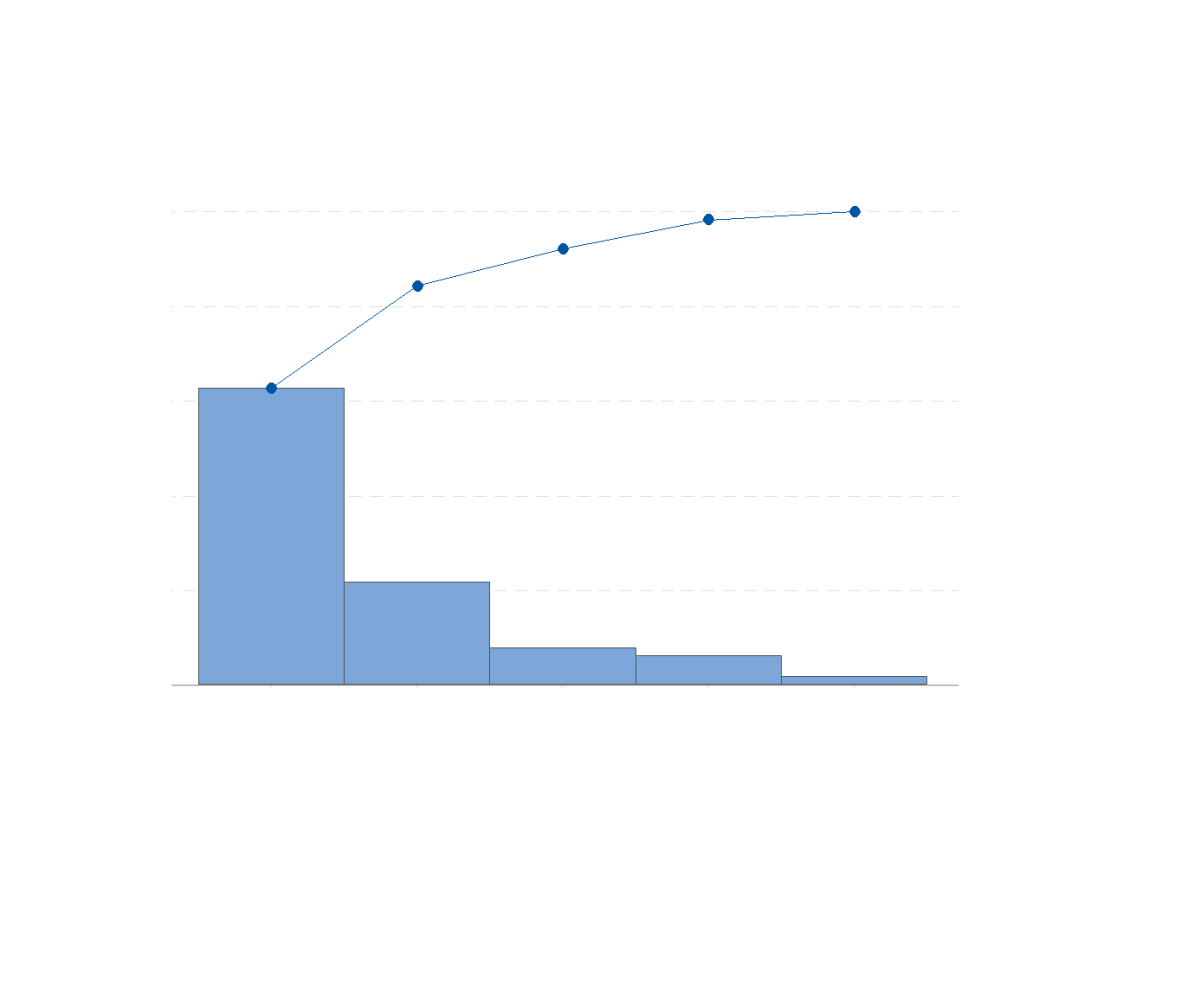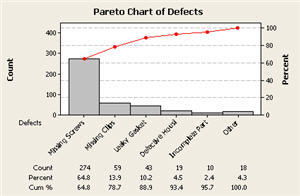

Shift X 1 aaa 1 aaa 1 aaa 1 aaa 1 bbb 1 bbb 1 bbb 1 ccc 1 ddd 1 ddd 1 ddd 1 ddd 1 ddd 1 ddd 2 aaa 2 bbb 2 ccc 2 ccc 2 ccc 2 ccc 2 ccc 2 ccc 2 ddd 2 ddd 2 ddd 3 aaa, etc. The Pareto chart signifies the important factors where a dotted line crosses over. Maybe you have knowledge that, people have search hundreds times for their chosen books like. Standard Pareto in MiniTab is not problem => Chart defected table: Labels in = “x” and Frequenties in = “y”.īut I have problem create same Pareto Chart by variable in “Shift”.What is right way to transform data form mentioned above to second new data form below? That is, everyone who knows that Pareto charts are a type of bar chart ordered by bar size to help you to determine which bars. Thank you for reading doe standardized effects pareto minitab. Shift X Y 1 aaa 4 1 bbb 3 1 ccc 1 1 ddd 5 2 aaa 1 2 bbb 1 2 ccc 5 2 ddd 3 3 aaa 1 3 bbb 2 3 ccc 1 3 ddd 2, etc. The dark blue bars indicate the 'vital few' reasons and these should be acted on as a priority as opposed to the reasons in the less frequent bars which are coloured light blue.Hello,I have data in that form, for example: The most votes is represented by the highest frequency (the first bar) in the Pareto chart which is 'Routine bloods not collected'. After a brainstorming session a team has voted on what they believe most contributes to patients not being prescribed the correct anticoagulant dose. The example in Figure 2 (below) shows a Pareto Chart of team votes. However, some of the 'trivial many' factors may be simple to address (low hanging fruit) and therefore may be acted upon earlier rather than later. The types of medication errors that fall above the 80% cut off line are known as the 'trivial many' and are generally seen as not a high priority to address when compared to the 'vital few' factors.

The types of errors that fall under the 80% cut off line indicate the 'vital few' types of medication error that should be addressed as a priority as they contribute most to the problem ie: The results were collected initially in a Tally Sheet then the data was placed in descending order of frequency in a Pareto Chart Template in Excel. An audit of 430 medication errors was conducted to determine the categories (types) of errors and their frequency. The example in Figure 1 (above) shows a Pareto Chart of types of medication errors.

PARETO CHART MINITAB SOFTWARE
Minitab: Minitab is advanced statistical software Six Sigma professionals use. It also helps a team communicate the rationale for focusing on certain areas. Microsoft Excel: This is the most common tool used to create a Pareto Chart. Using a Pareto diagram helps a team concentrate its efforts on the factors that have the greatest impact. cumulative per cent dots that fall above the 80% cut off line). factors whose cumulative per cent (dots) fall under the 80% cut off line) from the 'trivial many' (factors that, while useful to know about, have a relatively smaller effect i.e. The ordering in a Pareto Chart helps identify the 'vital few' (the factors that warrant the most attention i.e.
PARETO CHART MINITAB WINDOWS

This 'rule' of thumb has become a very common business rule and is often validated by data in every day business. Pareto also observed that 20% of the peapods in his garden contained 80% of the peas. The Pareto chart is based on the principle named after an Italian economist Vilfredo Pareto who observed that 80 of the land in Italy in the early 1900's was owned by 20 of the population. Vilfredo Pareto showed that approximately 80% of the land in Italy was owned by 20% of the population. Joseph Juran (a well regarded Quality Management consultant) suggested the principle and named it after the Italian economist Vilfredo Pareto, who noted the 80/20 connection in 1896. The 80/20 Rule (also known as the Pareto principle or the law of the vital few & trivial many) states that, for many events, roughly 80% of the effects come from 20% of the causes.


 0 kommentar(er)
0 kommentar(er)
